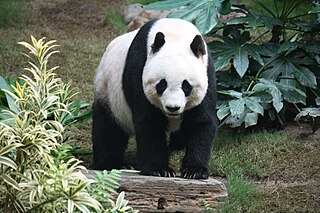
China, officially the People's Republic of China (PRC), is a country in East Asia. It is the world's second-most populous country with a population exceeding 1.4 billion. China spans the equivalent of five time zones and borders fourteen countries by land, tied with Russia as having the most of any country in the world. With an area of nearly 9.6 million square kilometres (3,700,000 sq mi), it is the world's third largest country by total land area. The country is divided into 22 provinces, five autonomous regions, four municipalities, and two semi-autonomous special administrative regions. The national capital is Beijing, and the most populous city and largest financial center is Shanghai.

The Yangtze or Yangzi is the longest river in Eurasia, the third-longest in the world, and the longest in the world to flow entirely within one country. It rises at Jari Hill in the Tanggula Mountains of the Tibetan Plateau and flows 6,300 km (3,915 mi) in a generally easterly direction to the East China Sea. It is the fifth-largest primary river by discharge volume in the world. Its drainage basin comprises one-fifth of the land area of China, and is home to nearly one-third of the country's population.

The giant panda, sometimes called a panda bear or simply panda, is a bear species endemic to China. It is characterised by its bold black-and-white coat and rotund body. The name "giant panda" is sometimes used to distinguish it from the red panda, a neighboring musteloid. Though it belongs to the order Carnivora, the giant panda is a folivore, with bamboo shoots and leaves making up more than 99% of its diet. Giant pandas in the wild occasionally eat other grasses, wild tubers, or even meat in the form of birds, rodents, or carrion. In captivity, they may receive honey, eggs, fish, yams, shrub leaves, oranges, or bananas along with specially prepared food.

Hamsters are rodents belonging to the subfamily Cricetinae, which contains 19 species classified in seven genera. They have become established as popular small pets. The best-known species of hamster is the golden or Syrian hamster, which is the type most commonly kept as pets. Other hamster species commonly kept as pets are the three species of dwarf hamster, Campbell's dwarf hamster, the winter white dwarf hamster and the Roborovski hamster.

A rose is either a woody perennial flowering plant of the genus Rosa, in the family Rosaceae, or the flower it bears. There are over three hundred species and tens of thousands of cultivars. They form a group of plants that can be erect shrubs, climbing, or trailing, with stems that are often armed with sharp prickles. Their flowers vary in size and shape and are usually large and showy, in colours ranging from white through yellows and reds. Most species are native to Asia, with smaller numbers native to Europe, North America, and northwestern Africa. Species, cultivars and hybrids are all widely grown for their beauty and often are fragrant. Roses have acquired cultural significance in many societies. Rose plants range in size from compact, miniature roses, to climbers that can reach seven meters in height. Different species hybridize easily, and this has been used in the development of the wide range of garden roses.

Bamboos are a diverse group of mostly evergreen perennial flowering plants making up the subfamily Bambusoideae of the grass family Poaceae. Giant bamboos are the largest members of the grass family, in the case of Dendrocalamus sinicus individual culms reaching a length of 46 meters, up to 36 centimeters in thickness and a weight of up to 450 kilograms. The internodes of bamboos can also be of great length. Kinabaluchloa wrayi has internodes up to 2.5 meters in length. and Arthrostylidium schombergkii with lower internodes up to 5 meters in length, exceeded in length only by papyrus. By contrast, the culms of the tiny bamboo Raddiella vanessiae of the savannas of French Guiana are only 10–20 millimeters in length by about two millimeters in width. The origin of the word "bamboo" is uncertain, but it probably comes from the Dutch or Portuguese language, which originally borrowed it from Malay or Kannada.

Magnolia is a large genus of about 210 to 340 flowering plant species in the subfamily Magnolioideae of the family Magnoliaceae. The natural range of Magnolia species is disjunct, with a main center in east and southeast Asia and a secondary center in eastern North America, Central America, the West Indies, and some species in South America.

The Yellow River is the second-longest river in China, after the Yangtze River, and the sixth-longest river system in Earth at the estimated length of 5,464 km (3,395 mi). Originating at an elevation above 15,000 feet in the Bayan Har Mountains, it empties into the Bohai Sea. The Yellow River's basin is often regarded as the birthplace of ancient Chinese civilization.

The cicadas are a superfamily, the Cicadoidea, of insects in the order Hemiptera. They are in the suborder Auchenorrhyncha, along with smaller jumping bugs such as leafhoppers and froghoppers. The superfamily is divided into two families, the Tettigarctidae, with two species in Australia, and the Cicadidae, with more than 3,000 species described from around the world; many species remain undescribed.

A plum is a fruit of some species in Prunus subg. Prunus. Dried plums are most often called prunes, though in the United States they may be just labeled as 'dried plums', especially during the 21st century.

The term carp is a generic common name for numerous species of freshwater fish from the family Cyprinidae, a very large clade of ray-finned fish mostly native to Eurasia. While carp are prized quarries and are valued as both food and ornamental fish in many parts of the Old World, they are generally considered useless trash fish and invasive pests in many parts of Africa, Australia and most of the United States.

A birch is a thin-leaved deciduous hardwood tree of the genus Betula, in the family Betulaceae, which also includes alders, hazels, and hornbeams. It is closely related to the beech-oak family Fagaceae. The genus Betula contains 30 to 60 known taxa of which 11 are on the IUCN 2011 Red List of Threatened Species. They are a typically rather short-lived pioneer species widespread in the Northern Hemisphere, particularly in northern areas of temperate climates and in boreal climates.

The Araliaceae are a family of flowering plants composed of about 43 genera and around 1500 species consisting of primarily woody plants and some herbaceous plants commonly called the ginseng family. The morphology of Araliaceae varies widely, but it is predominantly distinguishable based on its woody habit, tropical distribution, and the presence of simple umbels.

Hazels are plants of the genus Corylus of deciduous trees and large shrubs native to the temperate Northern Hemisphere. The genus is usually placed in the birch family Betulaceae, though some botanists split the hazels into a separate family Corylaceae. The fruit of the hazel is the hazelnut.

Aralia, or spikenard, is a genus of the family Araliaceae, consisting of 68 accepted species of deciduous or evergreen trees, shrubs, and rhizomatous herbaceous perennials. The genus is native to Asia and the Americas, with most species occurring in mountain woodlands. Aralia plants vary in size, with some herbaceous species only reaching 50 centimetres (20 in) tall, while some are trees growing to 20 metres (66 ft) tall.

The peony or paeony is a flowering plant in the genus Paeonia, the only genus in the family Paeoniaceae. Peonies are native to Asia, Europe, and Western North America. Scientists differ on the number of species that can be distinguished, ranging from 25 to 40, although the current consensus describes 33 known species. The relationships between the species need to be further clarified.

Ostriches are large flightless birds. They are the heaviest living birds, and lay the largest eggs of any living land animal. With the ability to run at 70 km/h (43.5 mph), they are the fastest birds on land. They are farmed worldwide, with significant industries in the Philippines and in Namibia. Ostrich leather is a lucrative commodity, and the large feathers are used as plumes for the decoration of ceremonial headgear. Ostrich eggs have been used by humans for millennia.
Macropanax concinnus is a species of plant in the family Araliaceae. It is a tree endemic to Java in Indonesia. It is a vulnerable species threatened by habitat loss.

The baiji is a possibly extinct species of freshwater dolphin native to the Yangtze river system in China. It is thought to be the first dolphin species driven to extinction due to the impact of humans. This dolphin is listed as “critically endangered: possibly extinct” by the IUCN, has not been seen in 40 years, and several surveys of the Yangtze have failed to find it. In China, the species is also called the Chinese river dolphin, Han river dolphin, Yangtze dolphin and whitefin dolphin. Nicknamed the "Goddess of the Yangtze", it was regarded as the goddess of protection by local fishermen and boatmen. It is not to be confused with the Chinese white dolphin or the finless porpoise. This is the only species in the genus Lipotes.
Flora of China is a scientific publication aimed at describing the plants native to China.

















